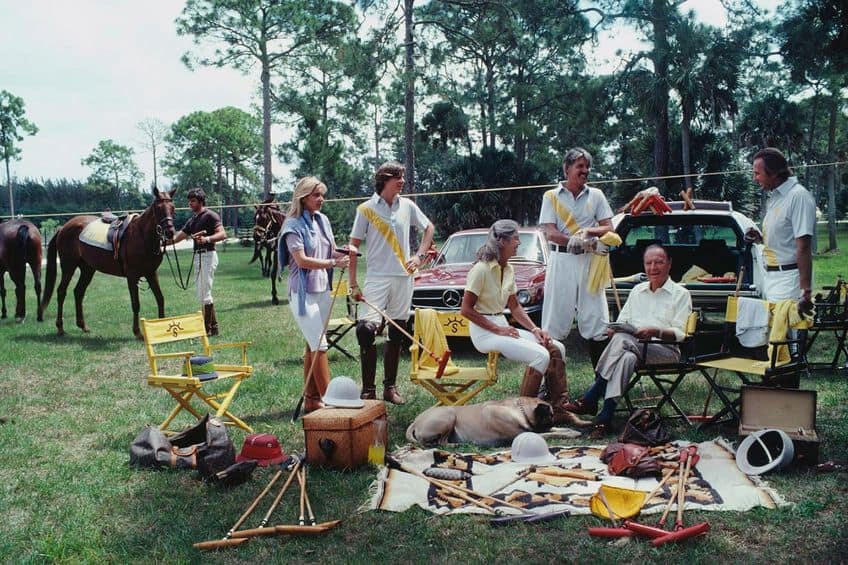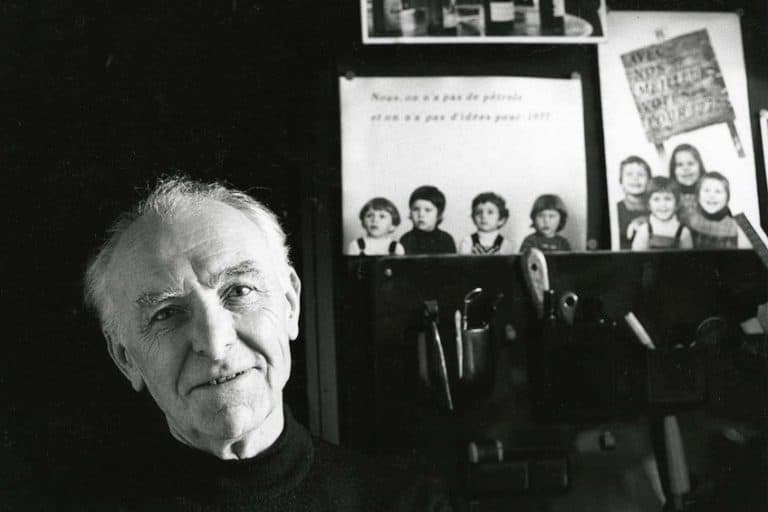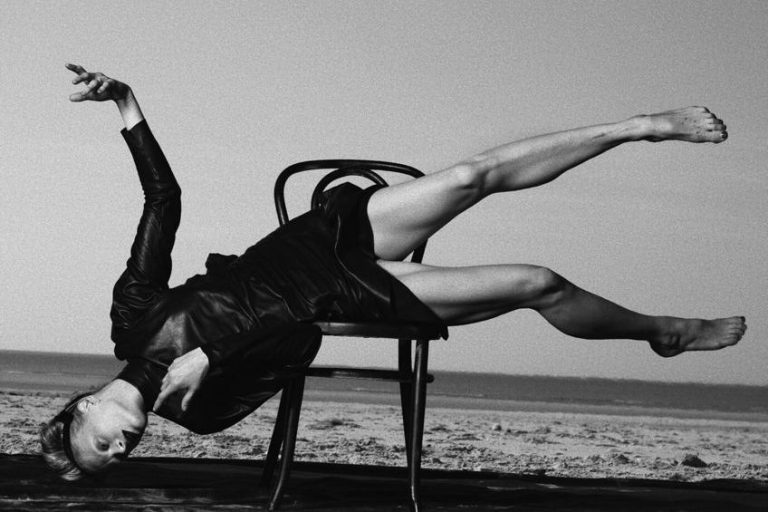Slim Aarons – Photographing Beauty in the Wake of War
World War II saw a boom in photojournalists in the United States who sought to capture the odds and ends of the war both during and after the conflict. Famous photographer Slim Aarons was one such artist who witnessed the atrocities of war as a photojournalist in World War II as well as the postwar climate and the rise of luxury photography. In this article, we will introduce you to the photographer who captured both the horrors of war and the opulence of American upper-class society throughout the 20th century. We will also explore a few interesting and iconic images by Slim Aarons, and provide you with our top three book recommendations, which will help you understand just how remarkable this photographer was. Read on for more about the exciting and exclusive life of Slim Aarons!
Table of Contents
Optimism in the Wake of War: Slim Aarons
Slim Aarons was a renowned American post-war photographer who was best known for his iconic images of celebrities promoted through a visual language of effortless luxury, sophistication, and privilege. Aarons was a prominent photojournalist who transitioned into more optimistic and glamorous leisure photography as an escape and healing balm from the horrors of war, which he witnessed in World War II.

Aarons’ contribution to photography was cemented in his compositions that followed the war and focused on the indulgent societies of elite Hollywood and America. His work, therefore, became symbolic of post-war optimism, which showcased the opulent and extravagant lifestyles of the upper class, which transported the public into realities that appeared unreal, and exotic, and proved to be highly influential. After all, who does not strive for an easier and more relaxed life?
| Artist Name | George Allen Aarons (Slim Aarons) |
| Date of Birth | 29 October 1916 |
| Date of Death | 30 May 2006 |
| Nationality | American |
| Associated Movements, Themes, and Styles | War art, photojournalism, Hollywood culture, celebrity portraiture, European aristocracy, and Modern art |
| Medium | Photography |
| Famous Artwork | ● Kings of Hollywood (1957) ● Dali’s Party (c. 1959) ● Beauty and the Beast (1959) ● Desert House Party (1972) ● Sunbathers by a swimming pool at the Hotel Punta Tragara on the island of Capri (1980) |
Slim Aarons’ photography was equated with the genre of photography known as luxury photography, which opened up a new world for those recovering from the chaotic climate of war. The ideal imagery promoted in Aarons’ work conveyed themes of elegance, desire, positive emotions, and a relaxed outlook on life that influenced many who sought to achieve such lifestyles. Aarons’ color photos also immortalized the American jet-setter lifestyle of the mid-20th century by capturing models lounging around in luxurious Palm Springs mansions and European beaches.
Aarons’ was also famous for his collaborations with celebrities like Grace Kelly, the Kennedys, and Marilyn Monroe whom he shot portraits of and worked on many campaigns for Life and Vogue magazines.
Below, we will unpack the influences in Slim Aarons’ life and artistic career through a detailed biography as well as a few iconic works from the 50s and 70s.
Early Life and Career
Slim Aarons, who was named George Allen Aarons at birth, was born on October 29, 1916, in New York. He was raised in a humble home where he developed a passion for visual storytelling. It was later uncovered that Aarons was raised in a Jewish immigrant household in the Lower East Side of Manhattan. His family possessed no wealth and his mother was eventually admitted into a psychiatric facility. Aarons had no relationship with his father and was thereafter passed around from family to family. It was also discovered that his brother Harry also possibly suffered from mental health issues and committed suicide.
By age 18, Aarons was sent to the United States Army to commence his career as a war photographer. Aarons later progressed to serve as a combat photographer in World War II, where he encountered many traumatic experiences and situations.
However, it was Aarons’ experience and disdain for the harsh realities of the war that sparked his vision of ideal living and he once remarked that the only beach he felt was worth landing on was one filled with beautiful women tanning in the sun.
After he served in the war, Aarons relocated to California where he started photographing celebrities. It was also around New Year’s Eve in 1957 when Aarons shot his first and most iconic photo of Kings of Hollywood portraying James Stewart, Clark Gable, Gary Cooper, and Van Heflin dressed in formal suits and sharing a good moment at the bar. Aarons’ photographs appeared in magazines like Holiday, Life, and Town & Country.
Artistic Education and Influences
Slim Aarons did not receive formal training in the arts, however, his experience in the war and his intuitive handling of the camera helped Aarons develop his eye for visually pleasing aesthetics. Aarons was inspired by the works of famous 20th-century photographers and artists such as Jacques-Henri Lartigue and Diego Rivera, who influenced his approach to photography. Aarons studied their techniques and created his own style by immersing himself in the art world through galleries and exhibitions.
Diego Rivera’s murals, which tackled social and cultural aspects of Mexican life, inspired Aarons’ interest in documenting the human experience and leveraging storytelling to capture moments of joy, leisure, and luxury.
His experience as a combat photographer equipped him with the ability to adapt and learn from the chaos of war and the camaraderie he witnessed, which pushed him to seek out the more positive and beautiful aspects of life. His idyllic vision was captured through the glamorous lifestyles and personalities of some of the most well-known figures of the day. Unlike other aspiring young photographers in the fine art industry, Aarons did not have a formal mentor to guide his style or development. He was influenced by the work of legends like Henri Cartier-Bresson and George Hoyningen-Huene, whose candid photography and elegant imagery shaped the visual language of his career.
Photographic Style and Techniques
The photographic style invented in Slim Aarons’ photography was characterized by an atmosphere of sophistication and refinement. Aarons’ photography was distinct and had a carefree approach to the angles and perspectives he used despite the luxurious settings. Aarons’ work displayed a meticulous eye for framing and composition, with many images shot in natural lighting. His photographs also included vibrant colors for added visual impact while his professionalism shone through in his ability to make his sitters feel incredibly comfortable. Aarons’ portraits convey a sense of authenticity, which made his candid photos successful and emotionally impactful.
In his war imagery, Aarons’ photos were a little more intense and he employed techniques such as fast shutter speeds and accurate framing to capture moments of action and emotion in combat. His understanding of perspective was also evident in his use of multiple angles and vantage points, which made his images seem more impactful and involved. Aarons’ approach to celebrity portraiture was more controlled and deliberate. He utilized both natural and artificial lighting to enhance his sitter’s features and create dramatic glamorous effects. He adopted a medium format camera for extra clarity and detail, which truly highlighted the personalities of his sitters. Aarons’ experience in the war and the studio enabled him to become one of the most versatile photographers of the 20th century.
Notable Achievements
Aarons’ photos were published in many issues of Life, Town & Country, and Holiday magazines, which attracted significant attention from audiences across the globe. Throughout his career, Aarons held several special exhibitions, which solidified his status as a prominent photographer. Aarons received numerous awards and accolades for his contributions to photography, which captured the luxury and elegance of realities that most people desired.
In 1997, Aarons also sold his archive of photos to the co-founder of Getty Images, Mark Getty.
Among his many awards, Aarons also bagged the prestigious Lucie Award in 2003, which recognized his achievements in photography and served as a tribute to the other pioneers who shaped the industry. Aarons’ photographs have been exhibited in galleries and exhibitions across the world, which showcased his timeless imagery and earned him many collectors.
Death and Legacy
Slim Aarons passed away in 2006 in Montrose and was laid to rest in Mount Auburn Cemetery in Massachusetts. A special documentary on Slim Aarons was also produced and released in 2017 by Fritz Mitchell, who revealed aspects of Aarons’ life that were previously unknown. The documentary, Slim Aarons: The High Life, presented Aarons as a Jewish man who was raised in conditions that contradicted the artist’s account. Regardless of the truth of his origins, Aarons’ legacy as a leisure and luxury photographer remained influential and continued to captivate those who admired his photographic style.
Slim Aarons’s distinctive style and glamorous portrayal of American jet-setter lifestyles inspired many contemporary photographers, including Gray Malin, whose aerial photographs of beaches and colorful destinations echo the focal points of Aarons’ eye for attractive spaces and a sense of playfulness. Another photographer who was influenced by Aarons is Martin Parr, whose satirical approach to leisure cultures was similar to Aarons’ subject and highlighted the absurdities of such lifestyles, which were inaccessible to most people.
Iconic Photos by Slim Aarons
The work of Slim Aarons resonated for decades in the leisure photography sector as a cornerstone of all things beauty, elitism, and leisure. He actively sought out people and situations that to him, represented the world of luxury and fame.
Below are a few iconic photos shot by Aarons that illustrate his eye for capturing all things serene and ideal in the 20th century.
Kings of Hollywood (1957)
| Date | 1957 |
| Medium | Chromogenic Lambda print |
| Dimensions (cm) | 40.6 x 50.8 |
| Where It Is Housed | Private collection |
Aarons himself once said that he sought to capture “attractive people doing attractive things – in attractive places”. This iconic image was taken by Aarons in 1957 at a party hosted by Romanoffs in Beverly Hills.
The famous image portrays the iconic film stars from left to right Clark Gable, Van Heflin, Gary Cooper, and James Stewart who appear to laugh and grin over a joke. Kings of Hollywood quickly became an image that encapsulated the glitz and glamor of celebrity culture.
This is complemented by charisma through the bubbly and debonair personalities of these old Hollywood stars.
Dalí’s Party (c. 1959)
| Date | c. 1959 |
| Medium | C-type print |
| Dimensions (cm) | Varied |
| Where It Is Housed | IFAC Arts, New York City, United States |
A master of capturing the good times, and the bad. Slim Aarons also photographed the renowned Surrealist Salvador Dalí at a ball in New York.
The quirky painter is captured in a candid shot pictured next to a red-haired woman. Salvador Dalí was known to host many extravagant and unforgettable dinner parties where he used food as a leitmotif and reference to his painting style.
In his later years, Dalí published his own cookbook called Les Dîners de Gala, which was reissued in 2016.
Desert House Party (1972)
| Date | 1972 |
| Medium | C-type print |
| Dimensions (cm) | Varied |
| Where It Is Housed | Staley-Wise Gallery, New York City, United States |
Shot in 1972, this high-society pool party scene was taken at a desert home in Palm Springs and designed by Richard Neutra for Edgar J. Kaufmann.
The image features the industrial designer Raymond Loewy standing in the center with a woman in yellow who was also the wife of Joseph Linsk, a well-respected art dealer. Many reproductions of Aarons’ work are available for purchase from the Staley-Wise Gallery in New York. They are also authorized by the Getty Images Gallery in London, which acquired the original Aarons archive.
Book Recommendations
Slim Aarons was a well-known photographer among many prestigious and renowned individuals of elite American society and Hollywood. If you want to learn a little more about his personal story, or the philosophy behind his work, then we highly suggest that you purchase a book on the topic.
Below, you can learn more about his works in the 50s, 60s, and 70s as showcased in these top three recommended books.
Slim Aarons: Once Upon A Time (2003) by Slim Aarons
Credited with perfecting the environmental portrait, Slim Aarons is introduced in this 2003 publication as one of the best photographers of the international elite. Slim Aarons: Once Upon A Time is a must-have for new fans of Aarons’ photography who enjoy browsing through the ideal and striking images of the mid-20th century featuring chiseled faces, trim bodies, and serene pools and gardens. The book is the ultimate insider for a peek at the privileged life of European aristocracy, media giants, and luminaries of all kinds.
- A luxurious book that captures the style of Slim Aarons
- Presenting an insider view of the wealthy, privileged, and powerful
- Over 250 images are included in this book of beautiful people
Slim Aarons: Women (2016) by Slim Aarons, Getty Images, and Laura Hawk
Slim Aarons: Women is a special publication that presents the women who influenced the career and art of Slim Aarons through their societal personalities and impact on Hollywood, fashion, and film. From figures like Esther Williams, the Duchess of Windsor, and Marlene Dietrich to Diana Vreeland and Audrey Hepburn.
One can expect to find over 250 unpublished photos with detailed information penned by Laura Hawk.
- Presenting the women who most influenced Aarons life
- The book contains over 250 images not in other books
- The images are accompanied by detailed captions by Laura Hawk
Slim Aarons: Style (2021) by Shawn Waldron, Kate Betts, Slim Aarons, Et al.
Slim Aarons: Style presents a collection of iconic photographs shot by Slim Aarons in black and white, which show off the true personalities of fashion’s elite. From icons to designers, the book contains images that have not been seen before and additions by fashion historians.

- A showcase of Slim Aarons best photographs of the fashion world
- Includes early black-and-white fashion photographs
- This collection includes some never-before-seen images
Slim Aarons’s legacy in photography highlighted the essence of the elite and privileged classes in America, which sold the ideal lifestyles to many who appreciated the timeless beauty captured in serene environments with some of the world’s most famous faces of cinema and fashion. Aarons’ photos and unique documentation of leisure remain a visual testament to the optimism and chase of the good life that many escape to today.
Frequently Asked Questions
Who Was Slim Aarons?
Renowned American photographer Slim Aarons was a well-established postwar and luxury photographer of the 20th century, who was most famous for his contributions to leisure photography and celebrity portraiture. Slim Aarons’ photography focused on the decadent lifestyles of the rich and famous throughout the post-war era, and captured the essence of luxury, elegance, and leisure.
What Was Slim Aarons’ Most Famous Photograph?
Kings of Hollywood (1957) is considered to be Slim Aarons’ most famous photograph, which features famous film stars Clark Gable, Van Heflin, Gary Cooper, and James Stewart at a party. The image soon became an iconic representation of charismatic celebrity culture during the mid-20th century.
What Is the Value of Slim Aaron’s Photographs?
Slim Aarons’ works have sold for up to $40,000 on auction and vary in price depending on the size and medium of his work.
Jordan Anthony is a film photographer, curator, and arts writer based in Cape Town, South Africa. Anthony schooled in Durban and graduated from the University of the Witwatersrand, Johannesburg, with a Bachelor of Art in Fine Arts. During her studies, she explored additional electives in archaeology and psychology, while focusing on themes such as healing, identity, dreams, and intuitive creation in her Contemporary art practice. She has since worked and collaborated with various professionals in the local art industry, including the KZNSA Gallery in Durban (with Strauss & Co.), Turbine Art Fair (via overheard in the gallery), and the Wits Art Museum.
Anthony’s interests include subjects and themes related to philosophy, memory, and esotericism. Her personal photography archive traces her exploration of film through abstract manipulations of color, portraiture, candid photography, and urban landscapes. Her favorite art movements include Surrealism and Fluxus, as well as art produced by ancient civilizations. Anthony’s earliest encounters with art began in childhood with a book on Salvador Dalí and imagery from old recipe books, medical books, and religious literature. She also enjoys the allure of found objects, brown noise, and constellations.
Learn more about Jordan Anthony and the Art in Context Team.
Cite this Article
Jordan, Anthony, “Slim Aarons – Photographing Beauty in the Wake of War.” Art in Context. August 25, 2023. URL: https://artincontext.org/slim-aarons/
Anthony, J. (2023, 25 August). Slim Aarons – Photographing Beauty in the Wake of War. Art in Context. https://artincontext.org/slim-aarons/
Anthony, Jordan. “Slim Aarons – Photographing Beauty in the Wake of War.” Art in Context, August 25, 2023. https://artincontext.org/slim-aarons/.












